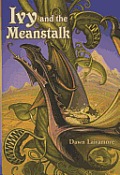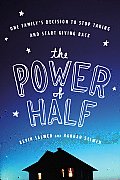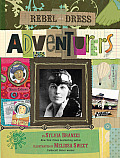When Mari McCarthy was last featured on Mother Daughter Book Club.com, it was to talk about mother-daughter journaling and her book, Who Are You? How to Use Journaling to Know and Grow Your Life.
As part of her new Wow! (Women on Writing) tour, she’s back with another intriguing guest post about things you should consider before you decide to partner on writing a journal with someone, and some thoughts about who may want to pair up to keep a journal.
McCarthy also has a new eBook just out called Dark Chocolate and the Journaler’s Soul: 17 Personal Journaling Stories for Healing and Growth, in which some of Mari’s friends and associates share their own stories about keeping a journal. You can win a copy of Dark Chocolate by leaving a comment here before midnight (PST) on Friday, December 23.
Journaling: Purely Personal, or for Sharing?
There are many different attitudes towards the question of privacy when it comes to journaling.
- Do you journal strictly for yourself, and fiercely defend the privacy of your notebooks?
- Do you journal privately but hope that your survivors will read your words after you’re gone?
- Do you use your journal as a place to give your writing a workout, later using bits in a book or other publication?
- Do you journal dispassionately, with no real concern for who may or may not read it?
- Do you journal as a way to communicate with a partner, friend, or successor?
Though we think of a journal as a personal tool, we need not think of it as exclusively private. But before embracing the joy of journaling out of the closet, let’s take a moment to remember that private journaling remains of utmost importance. The aspect of journaling that is expression without censure or repercussions or exposure on any level must forever be respected. A journal may become semi- or fully-public only if its author freely allows it.
That being said, many a journal may be created in the spirit of sharing. In this case, it will written by
- an individual who expressly intends it to be read by others, or
- two or more individuals, each contributing entries to one notebook.
In the latter case, the journal is the result of a compact between two or more parties for fun or profit or both.
It has to be a compact, a contract, a shared promise between people who have confidence in one another. Shared journaling isn’t for superficial situations. Intensity, commitment, persistence are all crucial. Trust is paramount.
As noted in my earlier post here, mothers and daughters can make dynamic journaling partners. Others who may put shared journaling to mutual benefit might be:
- Emergency team members
- Travel tour groups
- Recovery groups
- Mentor relationships
- Journaling as a classroom or project requirement
- New parents, sharing a journal for the first year of their child’s life
- Caretakers of any kind
And, of course, untold more possible groupings. If the compact is backed by sufficient trust, shared journals can be transformative. Our personal stories harbor enormous potential for teaching and learning, while providing welcome comfort in their humble familiarity.
The shared journal is shorthand for exploration and learning.
Again, don’t expect that the process of building a shared journal will be without challenges. Sustained effort will be required, despite setbacks. Commit to your partner(s) but even more, commit to yourself that you’ll complete the agreed-upon course. It’s by staying the course that you can accurately judge its effects.
Which leads me to my last tip: make the course relatively brief, to begin with. Agree to share the journal for a short time. When the time’s up, you can continue, increase, decrease, quit, whatever. Let the harmony build naturally. Enlarge your challenges in small bites, and let it all be a pleasure.
What are some relationships or involvements you suggest as having good potential for shared journaling? Please comment!
Mari L. McCarthy, journaling therapy specialist and author, owns Create Write Now, a website dedicated to all things journaling. The site includes hundreds of journaling prompts, personal journaling stories, interviews, a blog, and many other resources. Mari has published nine books to date; her most recent ebook is Help for the Holidays: 7 Days of Journaling to Ho! Ho! Ho!








